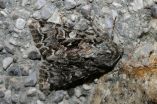How do continents break up?
New insights from South Africa
2015-08-13
(Press-News.org) 12.08.2015: When the western part of the super-continent Gondwana broke up around 130 Million years ago, today's Africa and South-America started to separate and the South Atlantic was born. It is commonly assumed that enormous masses of magma ascended from the deep mantle up to higher levels, and that this hot mantle plume (the Tristan mantle plume) weakened the continental lithosphere, eventually causing the break-up of the continental plate of Gondwana.
A group of German scientists are now questioning this theory. On the basis of seismic measurements published in the current issue of the journal "Geology", scientists from Potsdam (GFZ German Research Centre for Geosciences), Bremerhaven (Alfred-Wegener-Institute, AWI) and Kiel (GEOMAR) show that impacts of the mantle plume on the continental crust are actually surprisingly small. This is by no means in agreement with a large plume playing an important role in the break-up process. Accordingly, a dominant or controlling role of a mantle plume for the break-up of the continent is thus questionable.
Hot ascending mantle plumes in the Earth's mantle are an important driving force in plate tectonics. With an assumed diameter of the plume heads of up to several thousand kilometers, the amount of hot material ascending from the core mantle boundary at 2900 km depth is sufficient to migrate through the continental lithosphere. This process leads to the eruption of large volcanic material (flood basalts) at the Earth's surface. This is also the case for Southern Africa and South America: the Parana/Etendeka/ flood basalt provinces are the direct consequences of the Gondwana break-up starting some 130 million years ago. Traces of the break-up process can be found on the newly formed ocean floor: the Walvis Ridge off the coast of Northern Namibia images the track of the mantle plume.
In order to study these processes, German scientists investigated structures which are related to the break-up process of Gondwana in the South Atlantic. The upwelling of large amounts of hot mantle material produces regions of crustal and mantle rocks with different seismic velocities (with respect to the surrounding, unaffected regions). In cooperation with colleagues from AWI and GEOMAR, and with the support of the Geological Survey of Namibia, scientists from GFZ have carried out extensive seismic investigations on and offshore Northern Namibia. The crustal structure was investigated along several seismic lines. "For the first time we could obtain images of the deeper crustal structure in the region where the Walvis Ridge joins the African continent, in order to study the impact of a mantle plume" explains Trond Ryberg from GFZ. "Our seismic investigations found a distinctive high-velocity anomaly in the lower crust between 20 and 40 km depth." This region of anomalously high seismic velocities can be related to the intrusion of magmatic material in the lower crust of the Earth. This was expected according to the current perception. But surprisingly, the size of the anomaly was far too small to be created by a large plume head playing an active role in the break-up process. Trond Ryberg: "The crustal structure in the investigated region reflects the general process of continental break-up rather than the immediate impact of the plume head on the lithosphere. In addition, we were able to reconstruct the direction of the mantle plume flow". It seems that the break-up of Gondwana in the South Atlantic and, in general, the role of mantle plumes during the continental break-up needs to be carefully re-evaluated.
INFORMATION:
T. Ryberg, Ch. Haberland, Th. Haberlau, M. H. Weber, K. Bauer, J. H. Behrmann, W. Jokat: "Crustal structure of Northwest Namibia: Evidence for plume-rift-continent interaction", Geology, August 2015, Vol. 43, p. 739-742, doi:10.1130/G36768.1, geology.geoscienceworld.org/content/43/8/739.full
Figure captions:
Overnight camp in Northern Namibia (poto: C. Haberland, GFZ).
Drilling activities for seismic investigations (poto: C. Haberland, GFZ).
Camp in the area of Skeleton Coast, Namibia (poto: C. Haberland, GFZ).
On the way to the study area (photo: T. Ryberg, GFZ).
ELSE PRESS RELEASES FROM THIS DATE:
2015-08-13
This news release is available in German.
Kalmar/Halle(Saale). Why some species of plants and animals vary more in number than others is a central issue in ecology. Now researchers at Linnaeus University in Sweden and from the Helmholtz Centre for Environmental Research (UFZ) have found an important finding to answer this question: Individual differences have a positive and stabilizing effect on the number of moths. Species with varying colour drawing are generally more numerous and fluctuate less in number from year to year. The results were recently published ...
2015-08-13
Stillbirths have dropped by almost eight per cent in England since the smoking ban was introduced, research shows.
The number of babies dying shortly after birth has also dropped by almost eight per cent, the study estimates.
The findings add to growing evidence that anti-smoking laws have had significant benefits for infant and child health.
Researchers led by the University of Edinburgh looked at information on more than ten million births in England between 1995 and 2011.
Their findings suggest that almost 1500 stillbirths and newborn deaths were averted in ...
2015-08-13
The team of Prof. Carsten Schmidt-Weber and Prof. Jan Gutermuth of the Center of Allergy & Environment (ZAUM) at Helmholtz Zentrum München and TU München investigated the influence of pollen extract of common ragweed, also known as Ambrosia artemisiifolia*, on B cells. These cells can produce immunoglobulin E (IgE**), the key trigger and an important diagnostic marker of allergic reactions. "We were able to show that pollen extract enhances the secretion of allergy driving IgE antibodies in vitro and in vivo", explains Dr. Sebastian Öder who is leading author ...
2015-08-13
At home on the sofa, in a hospital bed, or in a care home: where a death takes place is always recorded on the death certificate. Until now, however, this information has never been collated and evaluated. In an Original Article in the current issue of Deutsches Ärzteblatt International (Dtsch Arztbl Int 112:496-504), Burkhard Dasch and his co-authors analyze for the first time the place of death records for Germany. What they found was that every second person died in a hospital; only one in four died at home.
The study evaluated more than 24 000 death certificates ...
2015-08-13
More and more mothers facing childbirth are asking for a cesarean. There are many reasons for this, ranging from the social and cultural to the personal, such as fear about the birth. A review article in the current issue of Deutsches Ärzteblatt International (Dtsch Arztbl 112: 489-95) by two Munich gynecologists, Ioannis Mylonas and Klaus Friese, considers the risks and benefits of cesarean delivery on maternal request.
Delivery by cesarean section is much more popular than it used to be. In 1991 a little over one delivery in six was by cesarean; now it is almost ...
2015-08-13
Between one-third and one-half of individuals in the United States who were infected with HIV around the time of birth may not have sufficient immunity to ward off measles, mumps, and rubella--even though they may have been vaccinated against these diseases. This estimate, from a National Institutes of Health research network, in collaboration with the Centers for Disease Control and Prevention, is based on a study of more than 600 children and youth exposed to HIV in the womb.
"Having a high level of immunity to measles, mumps, and rubella is important not only for ...
2015-08-13
Researchers from the University of Exeter highlight the risk that engineered nanoparticles released from masonry paint on exterior facades, and consumer products such as zinc oxide cream, could have on aquatic creatures.
Textiles, paint, sunscreen, cosmetics and food additives are all increasingly containing metal-based nanoparticles that are engineered, rather than found naturally.
The review, published today in the journal Environmental Chemistry, highlights the risks posed to aquatic organisms when nanoparticles 'transform' on contact with water and as they pass ...
2015-08-13
Since the chickenpox vaccine became available in the U.S. in 1995, there has been a large reduction in chickenpox cases. Hospitalizations and outpatient visits for chickenpox have continued their decline after a second dose of the vaccine was recommended to improve protection against the disease, according to a new study published in the Journal of the Pediatric Infectious Diseases Society. The findings also suggest that increasing vaccination coverage against the once common childhood illness helps protect those who are not immunized themselves.
Chickenpox, also known ...
2015-08-13
Boston, MA-- A marker commonly used to determine if a patient is having a heart attack can also be used to identify stable patients at high risk for deadly cardiac events, according to a new study led by investigators at Brigham and Women's Hospital (BWH). Using a test that is more sensitive than what is currently used in U.S. hospitals and clinics, the research team found that nearly 40 percent of patients with type 2 diabetes and stable heart disease had abnormal blood levels of the protein troponin. Patients with elevated levels of troponin were twice as likely as ...
2015-08-12
When it comes to reproduction, not every individual equally pulls his or her weight. Dana Herman and Mark Colwell of Humboldt State University spent 13 years tracking the successes and failures of almost 200 individual Snowy Plovers (Charadrius nivosus) nesting at a variety of sites in Humboldt County, California, to identify the factors that could be influencing reproductive success for birds in this threatened population. Their results, published this week in The Condor: Ornithological Applications, show that more than human activity, predator presence, exclosures to ...
LAST 30 PRESS RELEASES:
[Press-News.org] How do continents break up?
New insights from South Africa

